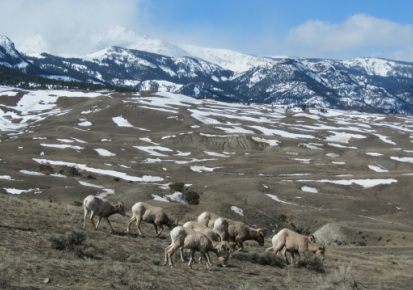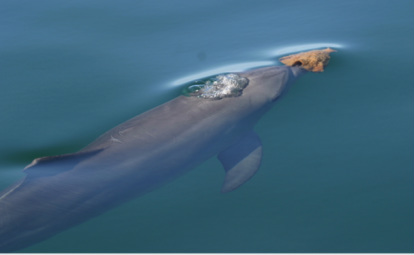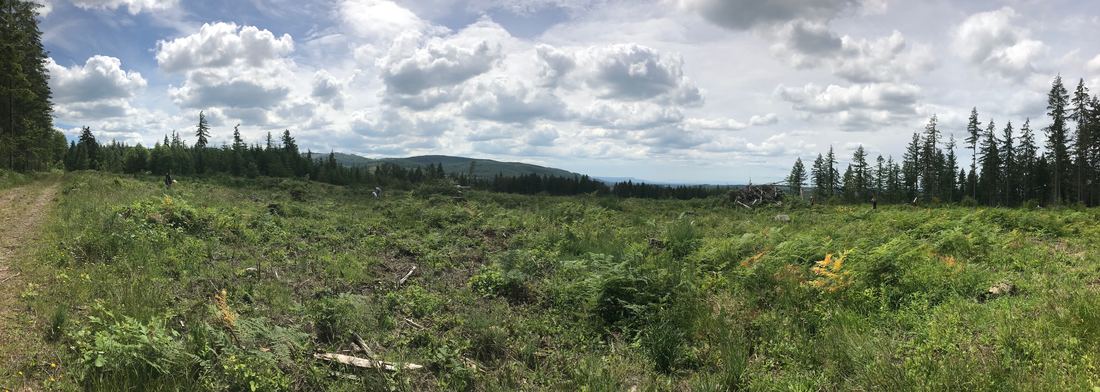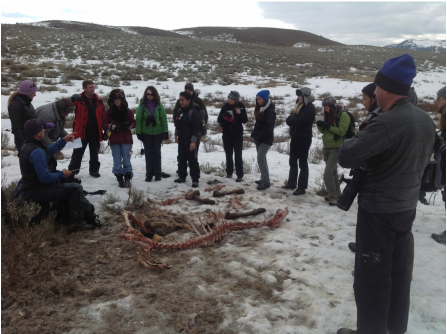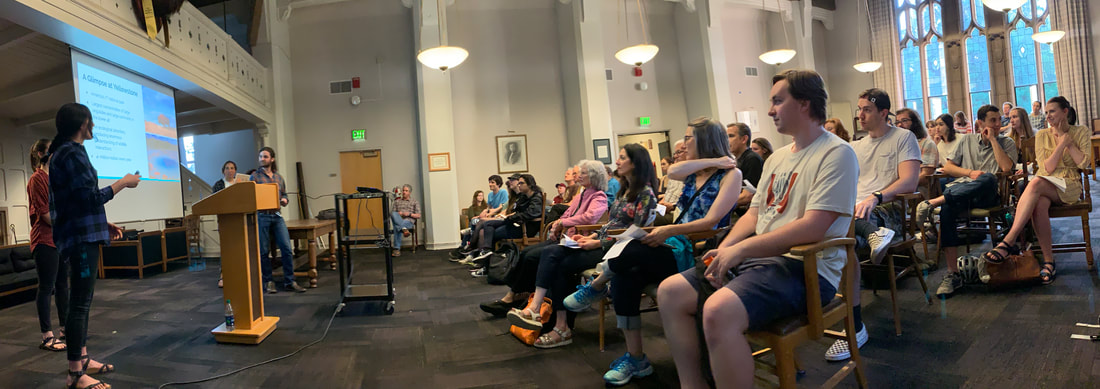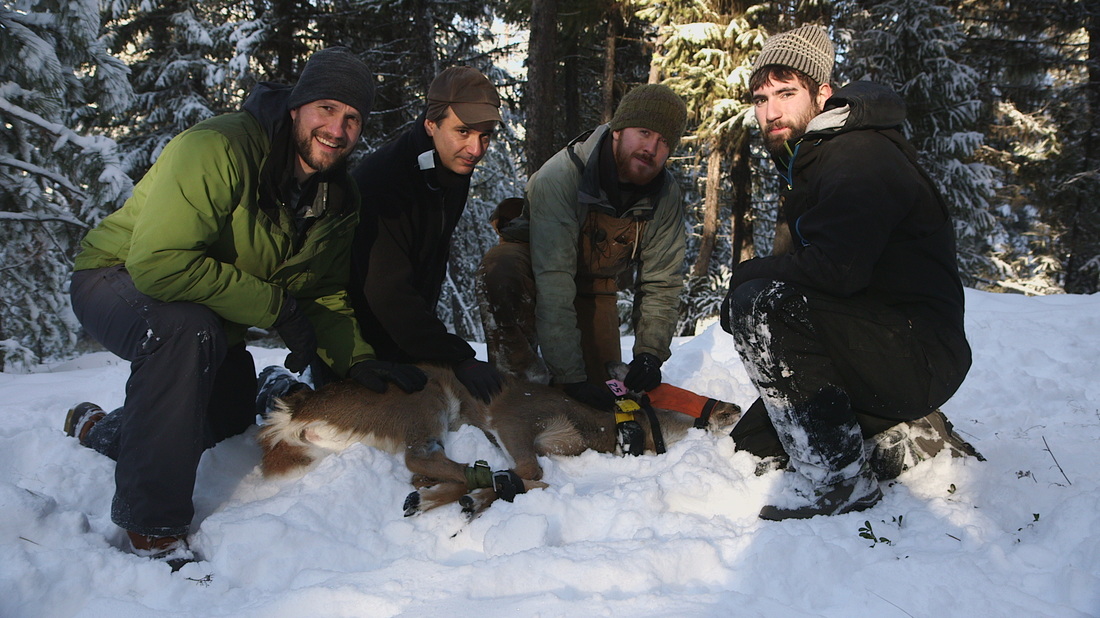|
ESRM 350 - Wildlife Biology and Conservation
In this course, offered each autumn and aimed at undergraduates who have just declared a wildlife concentration, students are introduced to the history, core concepts (e.g., habitat use, population growth) and conservation and management applications of wildlife science. Concepts and links to conservation/management are illustrated with case studies drawn largely from the northwestern USA. The course features a combination of lectures and discussion sections in which students present course-related case studies to their peers. |
Bighorn sheep near Gardiner in Yellowstone National Park
|
|
ESRM 450 - Wildlife Ecology and Conservation
In this course, offered each winter and aimed at upper-level undergraduates, students build on what they learned in ESRM 350 by exploring a range of advanced concepts in wildlife ecology including resource utilization and selection, density-dependent habitat use, specialization and animal personality, foraging under the threat of predation and state-dependent risk taking, population cycles, metapopulation dynamics, and responses to climate change. The course features a combination of lectures and discussion of the primary wildlife ecology literature. |
"Sponging" Indian Ocean bottlenose dolphin in Shark Bay, Australia (photo by Brooke Sargeant)
|
|
ESRM 304 - Environmental and Resource Assessment
During the autumn, spring, and summer quarters, I lead wildlife week as part of this survey course than runs the gamut of disciplines covered as part of the Environmental Science and Resource Management curriculum in the School of Environmental and Forest Sciences. In the autumn and spring, wildlife week consists of a pair of lectures on sampling wildlife populations followed by an amphibian census in St. Edward Park (in Kenmore), whereas the summer course involves a fecal pellet survey to estimate deer and elk relative abundance at Pack Forest (near Mt. Rainier). |
Recent clearcut being sampled by ESRM 304 students with deer fecal pellet transects at the UW Pack Experimental Forest.
|
|
ESRM 459 - Wildlife Conservation in Northwest Ecosystems*
In this field course, which takes place during the spring quarter, students travel to Yellowstone National Park, USA during spring break for eight days of hands-on wildlife research training and exposure to multiple perspectives regarding natural resource management in the northern Rockies. For the remainder of the quarter, students complete and present group research projects based on one of three long-term studies on which the course has focused: patterns of elk anti-predator vigilance, gray wolf foraging ecology, and the relationship between wolf hunting activity, environmental variables, and raven abundance. Recently, the University of Washington produced a story profiling the student experience in this class. *Co-taught with professors John Marzluff and Monika Moskal |
ESRM 459 students observe how Yellowstone wolf project
technicians process a wolf kill in March 2013 |
Huge turnout this year (2019) for our end-of-quarter student presentations in the Forest Club Room! (photo by M. Moskal)
|
SEFS 590 - Graduate Seminars
Each spring, I lead a small graduate seminar (< 12 students) focused on the uses of animal behavior in conservation, behavioral ecology, or predator-prey interactions. In these seminars, students present papers on and lead discussions of emerging topics or methodologies. Past topics have included incorporating social behavior in animal translocations, considering human disturbance as a risk stimulus, preserving animal cultures, animal personality, state dependent risk taking, and social versus individual learning. |
Animal-borne camera (Exeye LLC) being deployed on a white-tailed deer in eastern WA (photo by Pat Green)
|

